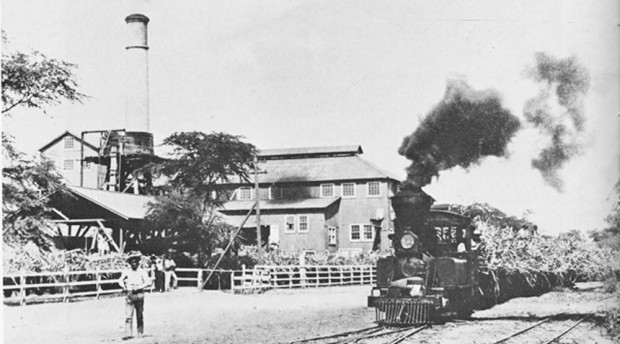In November, 1898, the year H. P. Faye became manager of Kekaha Sugar Co., Honolulu engineer James A. Tuthill visited the plantation to survey the mountainous land behind it. He arrived at Waimea at about 6 a.m. on Nov. 23rd
In November, 1898, the year H. P. Faye became manager of Kekaha Sugar Co., Honolulu engineer James A. Tuthill visited the plantation to survey the mountainous land behind it.
He arrived at Waimea at about 6 a.m. on Nov. 23rd following an overnight voyage from Honolulu aboard the barkentine “Albert,” which anchored some 200 yards from the beach, and he was rowed ashore with a dozen other passengers in a surf boat manned by Hawaiians.
Waimea’s population was then around 300, mainly plantation hands, just a portion of the hundreds of mostly Japanese and Chinese men and women then working at Kekaha plantation.
Tuthill soon boarded an open flatcar of the Kekaha plantation train with his luggage and engineering instruments for the four-mile ride to the Kekaha mill. The train, comprised of a small German engine, many flatcars and a few boxcars, also carried passengers from the “Albert,” 100 Japanese plantation laborers, freight and mail.
At the mill, the plantation secretary, Mr. Glade, met Tuthill and the pair rode horses to Glade’s home for breakfast, after which Tuthill saw a train by the mill consisting of 30 to 40 railroad flatcars piled high with sugarcane.
He learned that sugarcane entering the mill would be processed into sugar and dropped into 100-pound sacks to be loaded onto flatcars and drawn to Waimea, where the sacks would be rowed to a steamer for shipment to Honolulu and transshipment to the Mainland for refining.
Tuthill also rode a train with 30 empty flatcars to Mana, then the site of a plantation village. There, temporary tracks were laid in the fields, and six-mule teams pulled cars over it to be loaded with cane and pulled back to the main track for transport to the mill.



